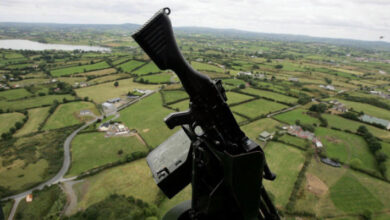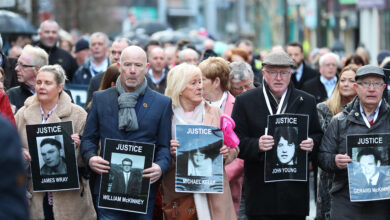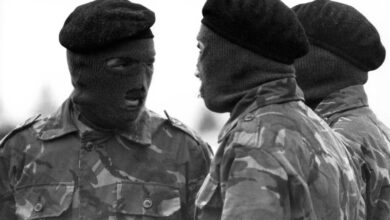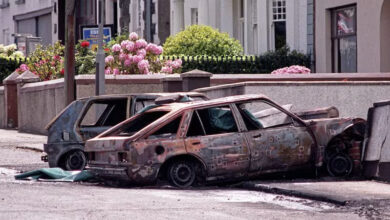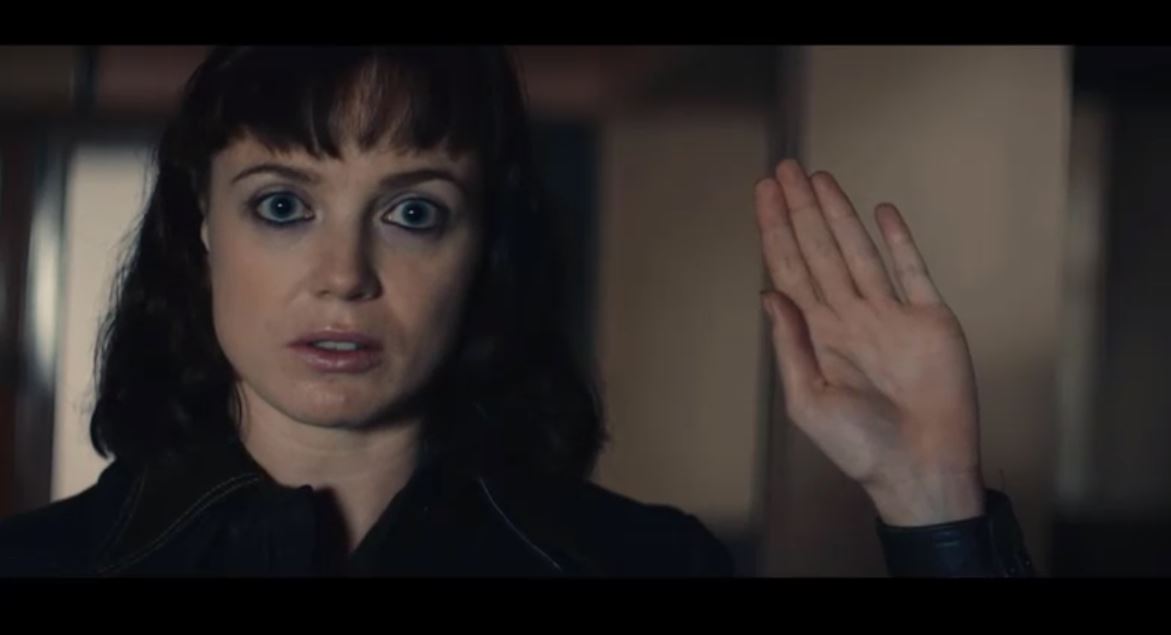Ruairí Ó Brádaigh
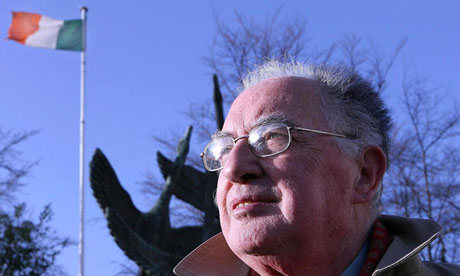
Ruairí Ó Brádaigh obituary
Anne McHardy
IRA chief of staff and president of Sinn Féin
Ruairí Ó Brádaigh, who has died aged 81, was an IRA army council member, the founding president of Provisional Sinn Féin in 1971 and an IRA army council member. He led the Provos until 1983, through the most violent years of Northern Ireland’s Troubles, until he split with Gerry Adams and Martin McGuinness over the peace process. In 1955, Ó Brádaigh had led the biggest IRA arms raid ever on an army depot in Britain, but from 1979 he was involved in a power struggle with the two northerners and was finally ousted when Adams replaced him as Sinn Féin president and McGuinness became its chief negotiator.
Ó Brádaigh regarded himself as keeping alive pure Republicanism, inherited from the IRA of 1916. He remained committed to the 1921 constitutional policy of refusing to take part in democratic politics until Ireland was reunited. He believed bitterly that Adams’s and McGuinness’s policy of using “the armalite and the ballot box” would perpetuate partition and keep “the occupied six counties”, as he termed Northern Ireland, inside the UK. In 1986 Ó Brádaigh said: “The armed struggle and sitting in parliament are mutually exclusive.”
He regarded the IRA ceasefire of 1996, the Good Friday agreement of 1998, the decommissioning of IRA weapons in 2006 and McGuinness becoming deputy first minister in a power-sharing government in Belfast in 2007, with the Rev Ian Paisley as first minister, as total betrayal.
After the 1983 split with the Provos, Ó Brádaigh formed the Continuity IRA and Republican Sinn Féin, which had the odd distinction in 2004 of being the only Irish organisations on President George W Bush’s list of banned foreign terrorist organisations in the US, even though they were not active, while another splinter organisation, the Real IRA, perpetrator of the 1998 Omagh bombing, was.
Ó Brádaigh had been instrumental in founding the Provos after a disagreement in 1971 with his one-time close IRA associate Cathal Goulding over moves by Goulding to participate in Irish politics and take seats in the Dáil. Sinn Féin had previously fought elections on an abstentionist ticket and Ó Brádaigh had won a seat in 1957.
For Ó Brádaigh, born Peter Roger (hence “Rory”) Casement Brady into a middle-class Republican family in Longford, Ireland, the commiment was personal loyalty. His father, Matt Brady, who died when he was 10, was an IRA man who suffered badly from injuries inflicted in 1919 by the Royal Irish Constabulary.
Ó Brádaigh was educated at St Mel’s College, Longford, and University College Dublin, and graduated in commerce and with an Irish language-teaching certificate. He became a teacher at Roscommon vocational school, resigning during periods in prison. He joined Sinn Féin at university, and the IRA in 1951. In 1955, he led a 10-member IRA group in an arms raid on Hazebrouck Barracks, near Arborfield, Berkshire, which successfully netted ammunition and weapons, including 55 Sten guns. However, many of the weapons were recovered when the first of the two vans taking them to a hideout in London was stopped for speeding. Ó Brádaigh, in the second van, stored his haul and returned to Ireland but an address in the first van led the police to the store.
In 1956, in the IRA’s Northern Ireland border campaign, codenamed Operation Harvest, Ó Brádaigh was part of the planning group and second in command of the western attack. A police barracks at Derrylin, County Fermanagh, was hit and an RUC constable, John Scally, killed. Ó Brádaigh and others were arrested the next day across the border in Cavan and imprisoned for failing to account for their movements. Shortly after his release, Ó Brádaigh was interned at the Curragh military prison. In September 1958 he and Daithi Ó Conaill escaped by cutting through a wire fence, and Ó Brádaigh became the first Dáil member on the run.
As IRA chief of staff, he penned the ceasefire standing the organisation down and bringing a formal end to the border campaign. In 1968, when protestant gangs began firebombing Catholic streets in retaliation against civil rights concessions by the Unionist government, only six IRA guns could be found to defend the burning homes. The bitter slogan painted on walls in Catholic areas was “IRA … I Ran Away”. Ó Brádaigh, working with Sean MacStiofain and Seamus Twomey, began recruiting a new IRA and seeking money and weapons.
The Dublin leadership found willing northern recruits in young men like such as Adams, then 20 and active organising street fighting in Belfast, and McGuinness, 19, similarly active in Derry.
As president of Sinn Féin, Ó Brádaigh was responsible for the Sinn Féin policy, Éire Nua, new Ireland, which proposed a federal Ireland reunited in four provinces, one of them Ulster. He did shift Sinn Féin in 1979 to allow recognition of the Irish special court in Green Street, Dublin, because so many activists were being tried there on charges of IRA membership, himself included, and being convicted with no evidence, on the grounds that their refusal to recognise the court was deemed proof of guilt. But he would not move on parliamentary abstentionism.
A sensitive and courteous man, an Irish traditional music enthusiast, Ó Brádaigh was not immune to the horror of bloodshed. I was standing nearby at a Sinn Féin annual conference in the Mansion House in Dublin in 1978 as he took a message saying that two IRA bombers, whose wives were delegates, had blown themselves up in Belfast the previous night. He had to tell the wives. He went white and broke into a sweat. I interviewed him later and he said that he felt in middle age that he now understood that pain was real for all affected, even British soldiers. That realisation did not change his commitment to “the armed struggle”.
As president of Sinn Féin after 1971, Ó Brádaigh was involved in negotiations with the Irish and British governments, something both governments denied, and in international publicity and IRA fundraising campaigns. In 1974 he took part in the Feakle ceasefire talks with protestant church leaders and in 1976 met the Ulster Loyalist co-ordinating committee at their request, to discuss whether their policy of an independent six-county Northern Ireland could fit with the nine-county old Irish kingdom of Ulster in Éire Nua.
In 1974, he testified before the US Senate committee on foreign relations about the treatment of IRA suspects in Northern Ireland. The same year, the State Department revoked his multiple entry visa to the US. In 1975, FBI documents described him as a “national security threat” and a “dedicated revolutionary undeterred by threat or personal risk”, but recorded that the visa ban was requested by the British Foreign Office, supported by the Dublin government. Ó Brádaigh also carried a British passport in the name Peter Brady, legally obtained through British-Irish citizenship agreements, which he claimed he used to continue to enter the US.
In 2005, Ó Brádaigh, a keen historian, donated a set of papers of the National University of Ireland. They included notes that he had taken during secret meetings in 1975-76 with British agents which confirmed that Britain did consider withdrawal from Ireland.
Latterly Ó Brádaigh was seen in Ireland as almost a comic figure, as modern Republicanism followed Adams and McGuinness into constitutional politics, but he continued to have influence, particularly abroad, often being interviewed in the US by video link.
He and his wife, Patsy, had six children.
- Ruairí Ó Brádaigh (Peter Roger Casement Brady), IRA leader and politician, born 2 October 1932; died 5 June 2013


